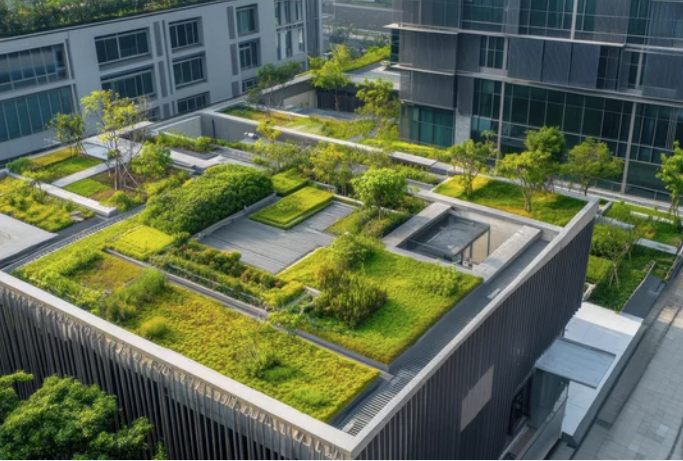What is sustainability in architecture
Sustainability can be such a broad term - and one often overused, misunderstood and misapplied. However, in architecture, sustainability has evolved from a buzzword to a critical necessity, as the world turns its attention to mitigating climate change and reducing environmental impact. Our current architecture needs to be able to live harmoniously with nature, increasing resource efficiency (water, energy and materials) and focusing on renewable technology and practices.
Range of solutions
Sustainable solutions can vary to adapt to different financial capacities, project goals and long term environmental impact. From widely adopted solutions like upgraded insulation, high performance glazing (such as triple glazing), passive heating, and solar panels, to more innovative approaches such as recycled and reclaimed materials, green roofs, living walls and biomimicry buildings, we are finding creative ways to design structures that are both environmentally responsible and energy-efficient.
The range of sustainable practices available today can benefit both individual buildings and the planet as a whole and seek to balance ecological, social, and economic concerns to ensure that the built environment supports both present and future generations.
1. Energy Efficiency and reduced consumption
Passive design - The use of natural resources like sunlight, wind, and thermal mass to regulate indoor temperatures, reducing the need for artificial heating and cooling. This includes features like proper orientation of the building, strategic window placement, and the use of materials that retain or block heat as needed.
Insulation and glazing - High-quality insulation and triple-glazed windows help minimize heat loss in colder climates and prevent overheating in warmer climates.
Solar panels and renewable energy - The integration of solar panels, wind turbines, and other renewable energy technologies can help buildings generate their own power, reducing reliance on non-renewable resources. If done efficiently this could lead to a net-zero carbon building status.
Biomimicry - Natural Cooling and Ventilation drawing inspiration from how animals and plants regulate temperature, architects design buildings that reduce the need for artificial cooling.
2. Sustainable Materials
Locally sourced - Using materials that are locally available reduces transportation-related carbon emissions and supports local economies.
Recycled or reclaimed - Materials like recycled steel, reclaimed wood, or repurposed brick not only reduce waste but also lower the environmental impact of producing new materials.
Low-carbon or low-impact - Sustainable materials like bamboo, rammed earth, and hempcrete have low embodied carbon, meaning they require fewer resources and energy to produce compared to traditional building materials like concrete and steel.
3. Water Efficiency
Rainwater harvesting - Collecting and storing rainwater for irrigation, flushing toilets, or even drinking (if properly filtered).
Low-flow fixtures - Installing water-efficient faucets, showerheads, and toilets to reduce overall water consumption.
Greywater recycling - Reusing water from sinks, showers, and washing machines for landscaping or non-potable purposes.
4. Indoor Air Quality and Health
Non-toxic materials - Choosing low-VOC (volatile organic compounds) paints, finishes, and materials that don't release harmful chemicals into the indoor air.
Natural ventilation - Designing buildings with airflow in mind, so they can be naturally ventilated without relying on energy-hungry air conditioning systems.
Biophilic design - Incorporating elements of nature, such as plants, natural lighting, and views of outdoor green spaces, can help improve the well-being of occupants.
5. Design for Adaptability and Longevity
Durability - Using materials and construction methods that ensure buildings will last for decades, reducing the need for frequent repairs and replacements.
Adaptable spaces - Designing spaces that can easily be modified or repurposed as needs change over time, reducing the need for demolition and new construction.
If you would like to know more about sustainability in architecture and how architects are using their knowledge and experience to help in reshaping the built environment, feel free to get in contact, let’s talk.





